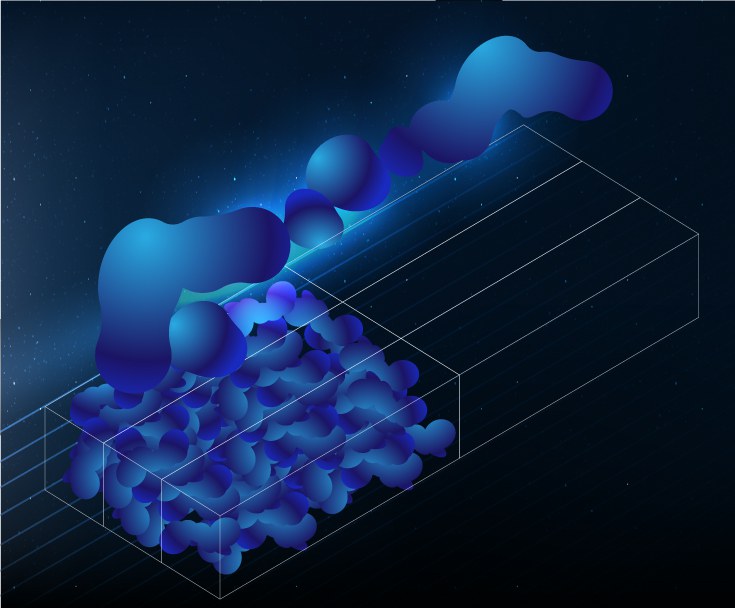About
Providing physical-mathematical models of performance and degradation phenomena in electrodes and cells of electrochemical energy devices and devising model-based diagnostic methods and tools.
Research Topics
- reactive transport in electrocatalytic materials
- computational fluid dynamics in porous media
- statistical physics-based modeling of materials degradation
- frequency response diagnostics
- parametrization and test protocols
Reactive transport in electrocatalytic materials
We strive to unravel the multifaceted interplay of transport and reaction that unfolds in electrocatalytically active electrode layers.
Goal: Develop physical models to rationalize distributions of electrostatic potential, species concentrations, liquid water pressure and saturation, and the fluxes of reactants, charged species, product species and water. We use these models to evaluate catalyst layers in terms of metrics of performance, lifetime and economic viability.


Computational fluid dynamics in porous media
Porous materials like active electrodes, gas diffusion or porous transport layers transport supply or remove educts or products to or from the catalytic sites.
Goal: Understand two-phase flow phenomena, including bubble and droplet formation and transport, in porous media and across interfaces to neighboring layers. We perform simulations of two-phase transport, using computational fluid dynamics, and couple them to macrohomogeneous performance models.
Statistical physics-based modeling of degradation in electrodes
We develop approaches to explore aging and degradation in electrochemical energy materials.
Goal: Link structure-transforming processes at nano-to-microscale with changes in macrostructure, properties and performance. Based on particle population balance modeling and percolation theory, we derive time-dependent effective properties of electrode materials, which are used to predict lifetime and performance effects.


Frequency response diagnostics
Dynamic diagnostic techniques like electrochemical impedance spectroscopy perturb the system with a harmonic signal and analyse its response.
Goal: Develop both linear as well as nonlinear frequency methods using different input and output signals, as well as analytical and numerical analysis methods. These diagnostic methods are vital tools for the characterization, production and operation of new materials, components, cells or stacks.
Parametrisation and test protocols
Fitting performance and degradation models to experimental data to extract model parameters.
Goal: Devise parameterization strategies, optimize combinations of experimental methods and curate test protocols towards diagnostic requirements like parameter accuracy, mechanism identifiability, measurement time or cost. Advanced test protocols are vital for characterisation during materials development, quality control during fabrication and in end-of-line testing.

Members
External partners and guests
- Andrei Kulikovsky
- Michael Eppler
- Lukas Lübben
- Tuan Anh Dao
- Tianliang Cheng
- Steven Beale
- Wolfgang Olbrich
- Kangjun Duan





